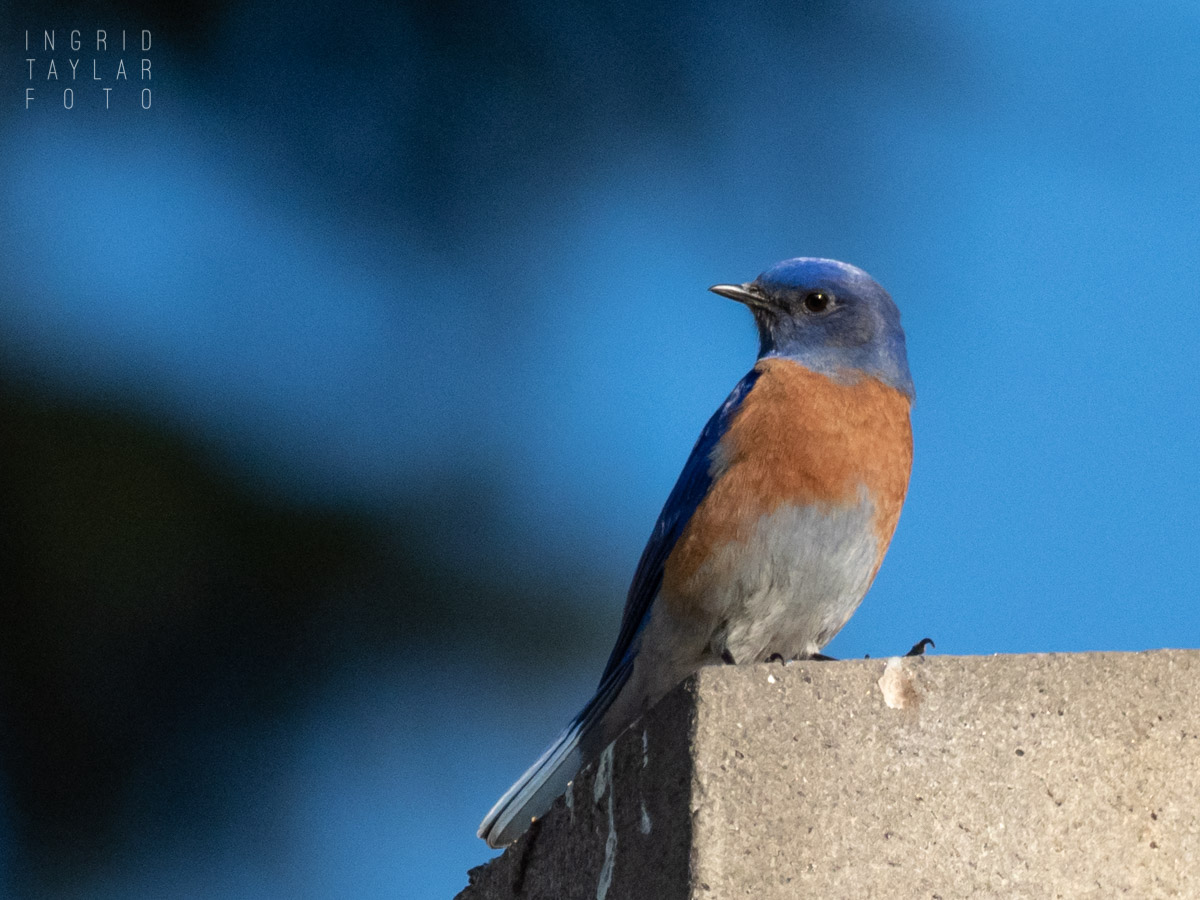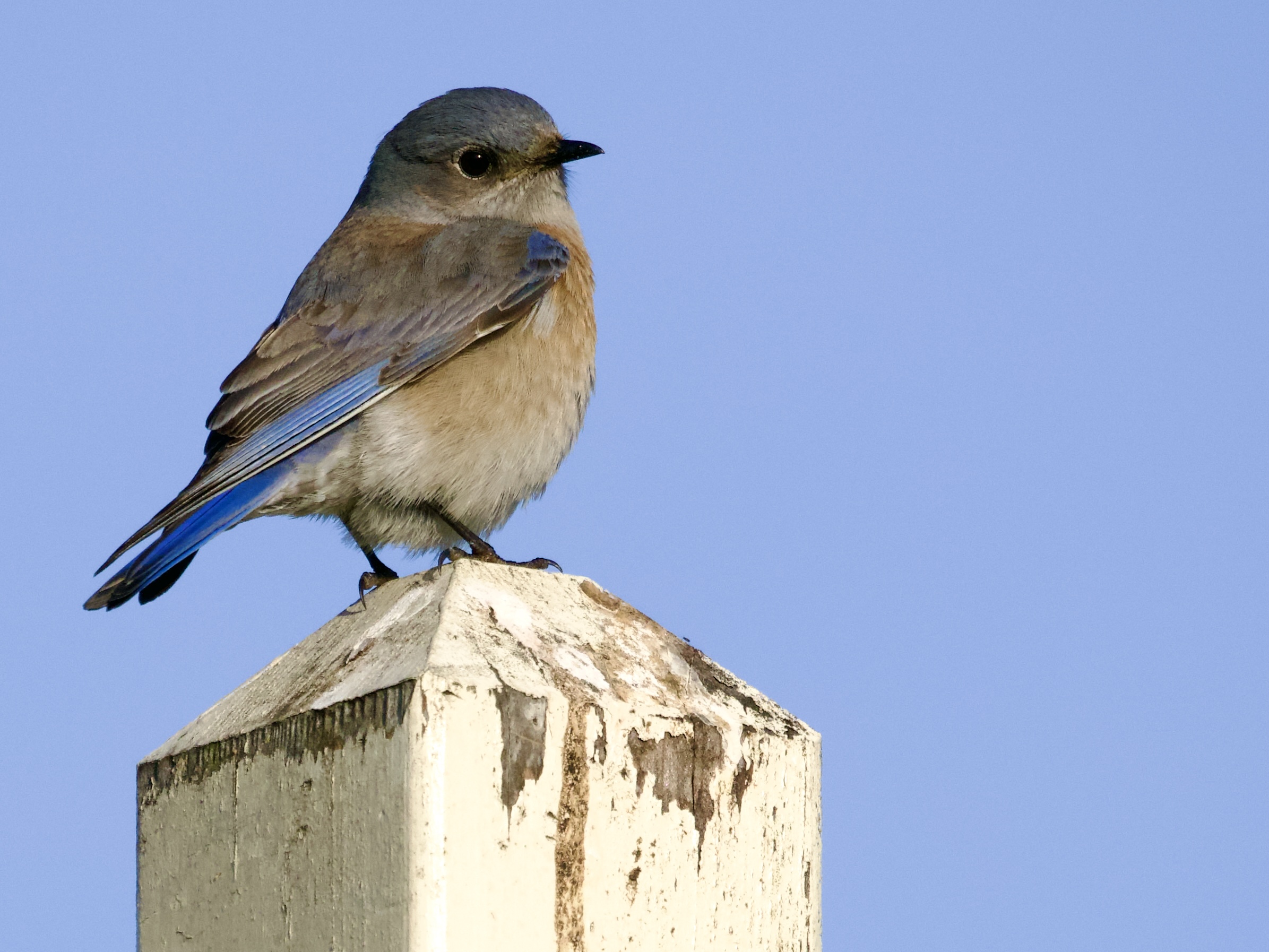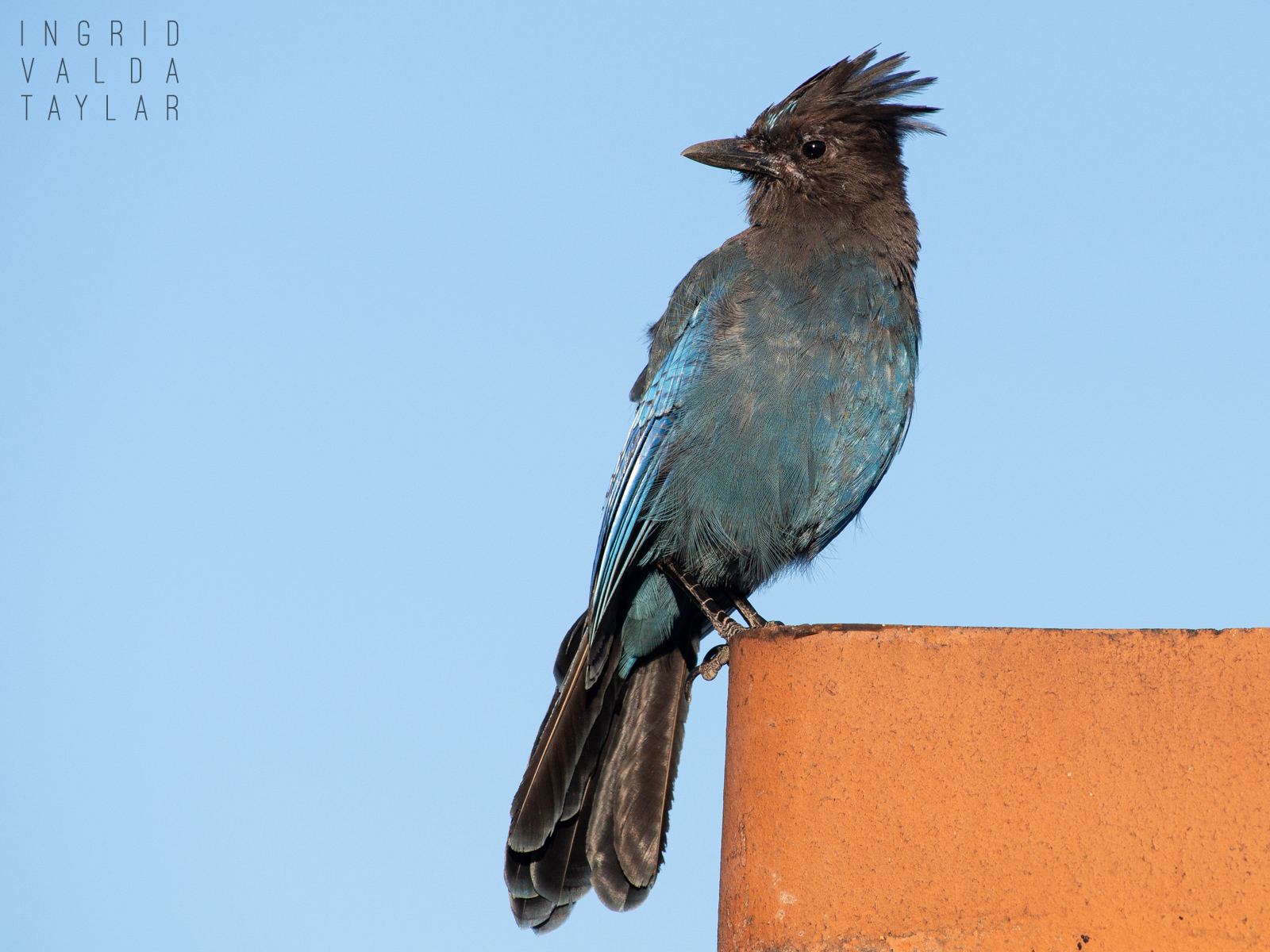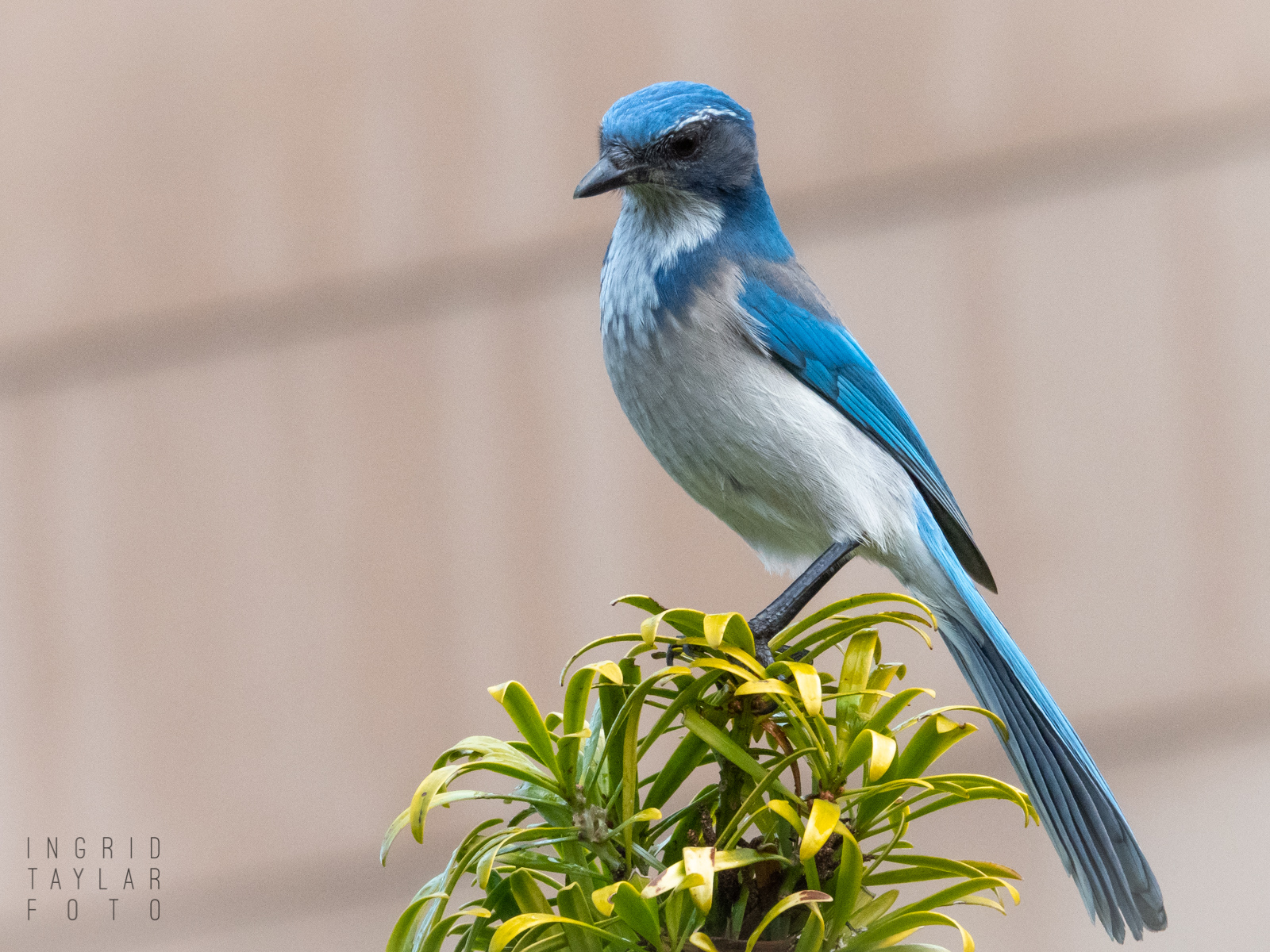I pulled a few of my Western Bluebird and jay photos to illustrate the following excerpt. This month’s Smithsonian Magazine has a short piece entitled Why So Blue? by Helen Fields, which explores the natural magic behind bluebird blue:
[Ornithologist Richard Prum] discovered that as a blue feather grows, something amazing happens. Inside each cell, stringy keratin molecules separate from water, like oil from vinegar. When the cell dies, the water dries away and is replaced by air, leaving a structure of keratin protein interspersed with air pockets, like a sponge or a box of spaghetti. When white light strikes a blue feather, the keratin pattern causes red and yellow wavelengths to cancel each other out, while blue wavelengths of light reinforce and amplify one another and reflect back to the beholder’s eye. The result: blue, an example of what scientists call a structural color (as opposed to a pigmented color) because it’s generated by light interacting with a feather’s 3-D arrangement. And different shapes and sizes of these air pockets and keratin make different shades of blue.
Why So Blue? by Helen Fields
The article goes on to speculate why the color blue is so prevalent in bird plumage, and how that blue might be perceived — aesthetically or otherwise — by other birds.





A very interesting post Ingrid! Love the image of the bird on the seedheads and pose with the open bill.
Thanks, Mia. Hugh and I were on a hike, totally alone in the park, and came upon a field of cut thistle. The parks in the area are trying to control invasive thistle growth. Among the fallen stalks were at least ten juvenile bluebirds sorting through the detritus. Every once in a while, a bird would flutter up to the top of the remaining thistles and call out. We sat for a long time watching them.
Stunning stunning birds! There’s nothing else quite like that totally natural and totally electric blue. I love how different angles and lighting can make it appear anywhere between dull gray to neon blue.
Me, too. And I love watching iridescence on birds like pigeons and ducks … transitioning from greens to purples to blues in one turn.
Interesting about the reason for the blue in the Bluebird Ingrid. I imagine this is true of the electric blue of the Mountain Bluebird as well? I love the way you covered all the aspects of my favorite cavity nesting bird (I monitor several Bluebird Trails in Northern California) beginning with the female, the pair, the juvenile that always brings a smile to my face with that spotted breast, and the electric blue male. It sounds like you need to put up some nest boxes if you haven’t seen any Bluebirds up there
I imagine so, Larry. And thanks for the comments about “coverage.” I feel lucky that I’ve seen them in various stage of growth and plumage, but I’d obviously like to see them more often — including Mountain Bluebirds. I need to look into the bluebird situation up here. We’re in an apartment while we’re living in Seattle, so no personal habitat to speak of. But, there must be some bluebird hotspots, maybe as we head east toward the mountains. Your note has inspired me to research this further.